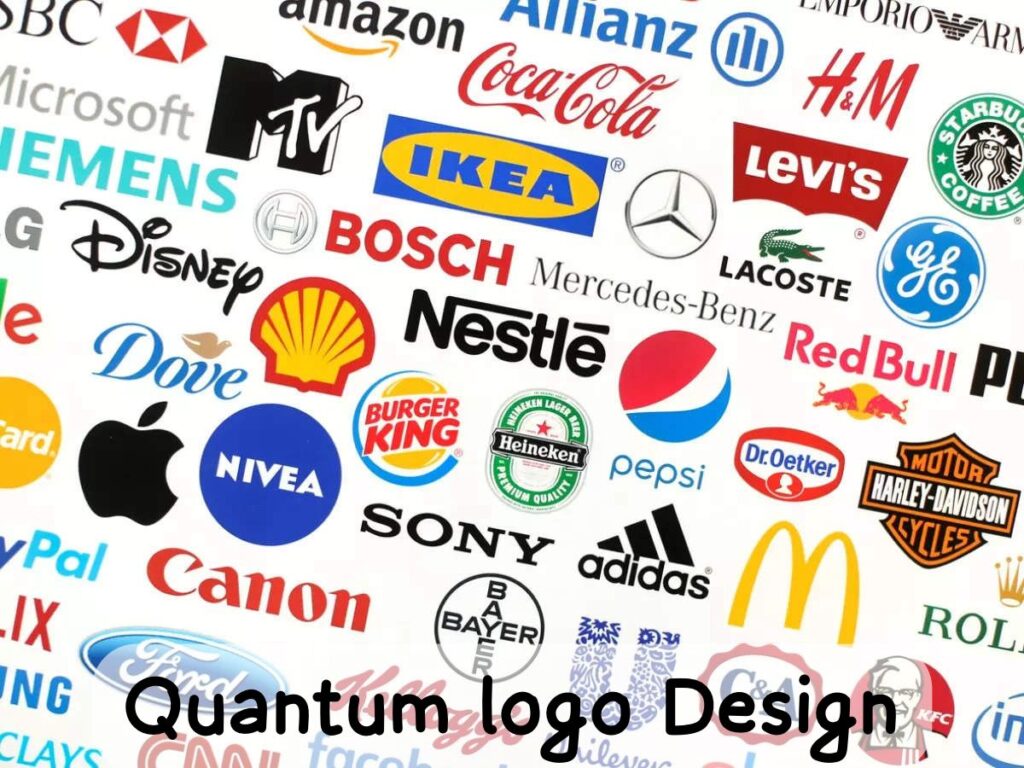
1. Visual Identity:
A logo serves as the visual representation of a brand.
It helps to create a strong and recognizable identity that distinguishes the brand from its competitors.
A well-designed and scientifically designed logo can leave a lasting impression on consumers and build brand recognition.
2. Brand recognition and recall:
A logo plays a crucial role in a brand’s recognition and recall. By using consistent branding elements, such as colors, typography, fonts, symbols, and imagery, a logo helps consumers associate these elements with the brand.
This leads to increased familiarity and easier recall when consumers encounter the brand in various contexts.
3. Professionalism and Trust:
A professionally designed QUANTUM principle logo adds credibility and professionalism to a brand.
It conveys that the brand has invested time and effort in crafting its visual identity, reflecting its commitment to quality. A strong and trustworthy logo can help establish positive brand perceptions and encourage consumer trust.
4. Differentiation and competitive advantage:
A logo helps a brand differentiate itself in the marketplace.
By effectively communicating a brand’s unique value proposition, personality, and positioning, a logo can set the brand apart from competitors. It enables consumers to connect emotionally with the brand and forms the basis for brand loyalty.
5. Consistency and Cohesion:
A well-designed logo sets the visual tone for a brand and serves as a foundation for creating consistent brand visuals across various touchpoints. It ensures cohesion in brand messaging and helps maintain a unified brand experience, regardless of the medium or platform used.
6. Scalability and adaptability:
A logo should be designed with scalability in mind, allowing it to be used across different applications and sizes without losing its visual impact.
It should also have the flexibility to adapt to different contexts, such as online platforms, print materials, merchandise, and packaging.
Therefore, a good logo is important for branding because it visually represents a brand, helps in brand recognition and recall, adds professionalism and trust, differentiates a brand from competitors, maintains consistency and cohesion, and allows for scalability and adaptability across various touchpoints.
A well-designed Quantum logo is a valuable asset for any brand seeking to establish a strong and memorable presence.
We design Quantum logos and business cards, keeping in mind all the aspects of the owners and company.
How Logos and Symbols can Talk in subconscious language
—————————————-
1. Recognition:
Logos serve as a quick visual identifier for any brand, and the subconscious mind recognizes these symbols faster than text, creating an immediate connection.
2. Association:
Symbols and patterns are associated with certain emotions or ideas, which can be triggered subconsciously when encountered.
3. Color Psychology:
Colors within logos and patterns have psychological effects—for example, blue can bring trust and show expertise, while red can stimulate excitement and high energy.
4. Shape Language:
The shapes used in logos, like circles for unity and wholeness or squares for stability, communicate subconsciously with the viewer.
5. Repetition:
Repeated exposure to a logo or pattern ingrains it in the subconscious, leading to familiarity and preference.
6.Cultural Significance:
Symbols can carry cultural meanings that are understood on a subconscious level, and so they influence perception and behavior.
7. Memetic Power:
Logos can act as memes, carrying ideas and behaviors that spread through society subconsciously.
8. Brand personality:
Logos contribute to the perception of a brand’s personality, which consumers relate to on a subconscious level.
9. Emotional Response:
Effective logos can stimulate an emotional response such as trust or happiness, influencing subconscious attitudes toward the brand.
10. Storytelling:
Logos and symbols can tell a story or convey a message subconsciously through visual narrative elements.
11. Priming:
Exposure to certain logos or patterns can prime the subconscious to respond in specific ways, affecting decision-making and preferences. its called priming.
12. Symbolic Communication:
Logos communicate symbolically, which the subconscious mind decodes and understands without conscious effort.
13. Perceptual Fluency:
The subconscious mind prefers logos and patterns that are easy to process, leading to a more positive reaction to the brand or company.
14. Subliminal Messaging:
Some logos may contain subliminal elements that are not immediately obvious to the conscious mind but can still influence thoughts and behaviors. These hidden details can create a lasting impression and subtly affect how the brand is perceived.
15 .Consistency:
Consistent use of logos and symbols across different platforms reinforces brand identity and helps with subconscious recognition.
16. Personal Identity:
People often align themselves with brand logos that represent their own values or identity, which is their subconscious choice.
17. Trust Building:
Over time, familiar logos and symbols can build a sense of trust with consumers as they become associated with past positive experiences.
18. Exclusivity:
Some logos convey a sense of exclusivity or luxury, appealing to the subconscious desire for status and prestige.
19. Functionality:
Logos can also indicate the function or nature of a product, allowing the subconscious to quickly understand the brand’s offering.
20. Aesthetic Appeal:
A well-designed logo or pattern can have a high aesthetic appeal, which can be pleasing to the subconscious mind and influence brand preference.
21. Astrological Connection of Logos:
In astrology, the 3rd house represents communication and the mind. So the impact of logos and symbols on the subconscious is linked to this house’s influence on how we perceive and process information.
#logodesign #logoinspiration #logodesigner #branding #logomark #graphicdesign #creativelogo #logomaker #identitydesign #logotrends #logotype #logoinspo #logogoals #quantumlogodesign
